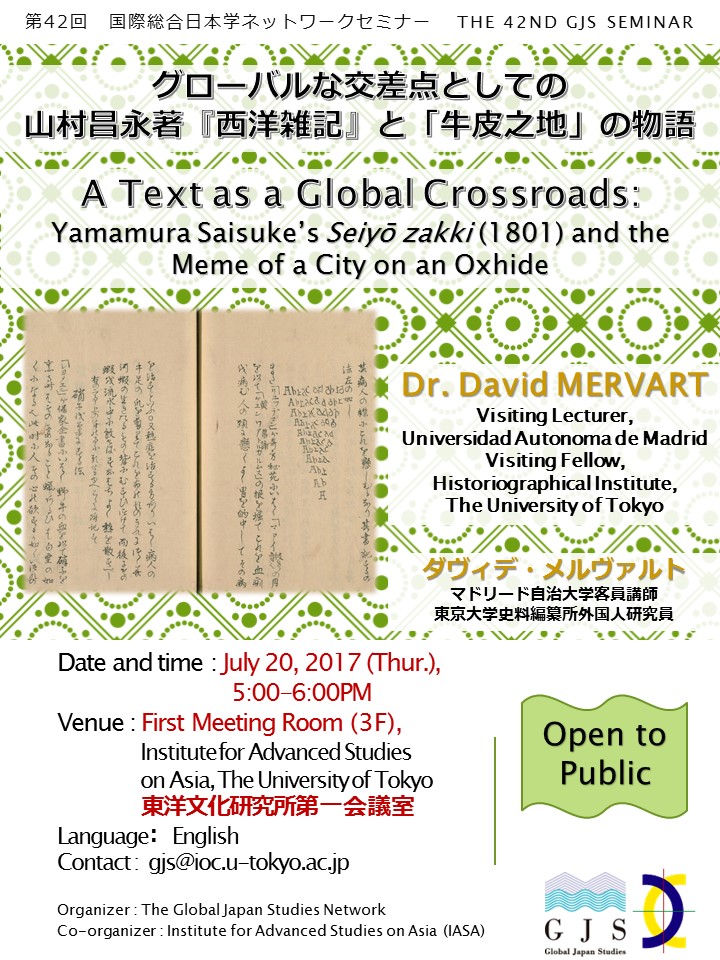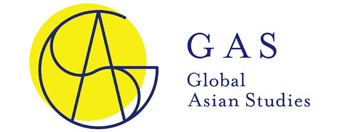The 42nd GJS SeminarA Text as a Global Crossroads: Yamamura Saisuke’s Seiyō zakki (1801) and the Meme of a City on an Oxhide
| Date and time: | July 20, 2017 (Thur.), 5:00-6:00PM |
|---|---|
| Venue: | First Meeting Room (3F), Institute for Advanced Studies on Asia, The University of Tokyo |
| Speaker: | Dr. David MERVART (Visiting Lecturer, Universidad Autonoma de Madrid. Visiting Fellow, Historiographical Institute, The University of Tokyo) |
| Language: | English |

Abstract: The early preoccupation with the shapes and partitioning of the European past in Japan was driven by a mixture of pedantic antiquarianism, amused ethnographic curiosity and a modicum of demand for geopolitical intelligence rather than by the considerably later arrival of the diplomatic gunboats of the western powers in mid-nineteenth century. As the Dutch philological expertise in the course of the eighteenth century gradually became another available tool—alongside the long-established Sinological erudition—for accessing information and generating knowledge about the world, commentators around the archipelago began to read and use not only medical or astronomical manuals of the Occidentals but also their histories.
A case in point is young Tsuchiura retainer Yamamura Saisuke’s (1770–1807) collection of strange stories from the West, Seiyō zakki (dated 1801). Typical of the genre of early Rangaku translation, this is a complex fabric of Japanese rendering of a digest of several European texts (in Dutch) interspersed with a large number of commentaries culled by the translator from a variety of other European, but also Chinese sources. The resulting product is a sort of crossroads of various textual traditions and transmissions that places a Japanese author at the end of the eighteenth century firmly in a worldwide web of knowledge. This leads to some surprising discoveries that, for example, connect ancient Carthage to contemporary Manila, Batavia and Guangzhou. The case study serves as a reminder that intellectual history of premodern Japan cannot remain constrained to the physical territory of contemporary Japanese state but needs to embrace a dimension that for lack of a better term we may call global. Organizer: The Global Japan Studies Network (GJS)
Co-organizer: Institute for Advanced Studeis on Asia (IASA)
Contact: gjs[at]ioc.u-tokyo.ac.jp



